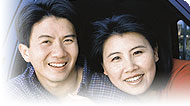Penn Herb Wellness Guide
Seasonal Affective Disorder

About This Condition
Seasonal affective disorder (SAD) is an extreme form of common seasonal mood cycles, in which depression develops during the winter months.
How seasonal changes cause depression is unknown, but most of the research into mechanisms and treatment has focused on changes in levels of the brain chemicals melatonin and serotonin in response to changing exposure to light and darkness.
Symptoms
SAD is characterized by typical symptoms of depression, such as sadness, hopelessness, and thoughts of suicide (in some cases), and “atypical” depressive symptoms such as excessive sleep, lethargy, carbohydrate cravings, overeating, and weight gain. The symptoms usually occur the same time of year, typically fall and winter, and disappear with the onset of spring and summer.
Light exposure research and treatmentmeasures in “lux” units. For example, the intensity of light on a high mountain at the equator at midday is greater than 100,000 lux, compared with less than 11 lux generated by a moonlit night. A well-lit kitchen or office may be around 500 lux.
Healthy Lifestyle Tips
Exercise can ease depression and improve well being, in some cases as effectively as antidepressant medications.1 One study found that both one hour of aerobic exercise three times per week and the same amount of anaerobic exercise were significantly and equally effective in reducing symptoms of depression.2 In a preliminary study of women with SAD, exercise while exposed to light was more likely to be associated with fewer seasonal depressive symptoms than was exercise performed with little light exposure.3 A controlled study of 120 indoor employees used relaxation training as the placebo in a study of fitness training, light exposure, and winter depressive symptoms. Fitness training was performed two to three times per week while exposed to either bright light (2,5004,000 lux) or ordinary light (400600 lux). Compared to relaxation, exercise in bright light improved general mental health, social functioning, depressive symptoms, and vitality, while exercise in ordinary light improved vitality only.
Holistic Options
Diminished sunlight exposure in winter contributes to changes in brain chemistry and plays a role in seasonal mood changes. Artificial lights have been widely used to increase light exposure during winter months. Many studies show the benefit of light therapy in the treatment of SAD.4, 5, 6, 7 In a controlled trial, 96 patients with SAD were treated with light at 6,000 lux for 1.5 hours in either morning or evening, or with a sham negative ion generator, which was used as the placebo. After three weeks of treatment, morning light produced complete or near-complete remission for 61% of patients, while evening light helped 50%, and placebo helped 32%.8 Another study similarly found morning light to have more antidepressant activity than evening light for people with SAD. This study also found that patterns of melatonin production were altered in seasonal depression, and that morning light therapy shifted this pattern toward those of control subjects who did not have seasonal depression.9 Blood flow to certain regions of the brain was measured after light therapy and was increased in seasonal depression patients who benefited from the light therapy. The increase in regional brain blood flow did not occur in those patients who did not respond to the light therapy.10 Light therapy begun prior to the onset of winter depression appears to have a preventive effect in people susceptible to SAD.11
A review of clinical trials of light therapy for SAD concluded that the intensity of the light is related to the effectiveness of the treatmnent.12 A higher response rate was seen in trials where light intensity was greater, compared with trials that used light therapy of lower intensity. Red and potentially harmful ultraviolet wavelengths are not necessary for a response to light therapy.13
A study of the adverse side effects from high-intensity light therapy found them to be common, mild and brief. Among people who underwent brief treatment with 10,000 lux, 45% experienced side effects such as headaches and eye and vision changes. Described as mild and temporary, they did not interfere with treatment.14
Dawn simulation is a form of light therapy involving gradually increasing bedside light in the morning. In a comparison study, dawn simulation using 100300 lux for 6090 minutes every morning improved symptoms of SAD similarly to bright light therapy using 1,5002,500 lux for two hours every morning.15
A negative ionizer is a device that emits negatively charged particles into the air. Negative air ionization may be useful in treating SAD. One double-blind trial compared the benefits of high-density negative ionization, providing 2.7 million ions per cubic centimeter, and low-density negative ionization, providing 10,000 ions per cubic centimeter, for people with SAD. Atypical depressive symptoms improved by 50% or more for 58% of patients receiving the high-density ionization for 30 minutes daily, while only 15% of those receiving low-density ionization had 50% or greater improvement. There were no side effects, and all of the patients who responded to the therapy relapsed when ionization was discontinued.16 In another controlled trial, high-density ionization was found equally as effective as light therapy, and both were significantly more effective than low-density ionization.17
Copyright 2025 TraceGains, Inc. All rights reserved.
Learn more about TraceGains, the company.
The information presented by TraceGains is for informational purposes only. It is based on scientific studies (human, animal, or in vitro), clinical experience, or traditional usage as cited in each article. The results reported may not necessarily occur in all individuals. Self-treatment is not recommended for life-threatening conditions that require medical treatment under a doctor's care. For many of the conditions discussed, treatment with prescription or over the counter medication is also available. Consult your doctor, practitioner, and/or pharmacist for any health problem and before using any supplements or before making any changes in prescribed medications. Information expires December 2025.


